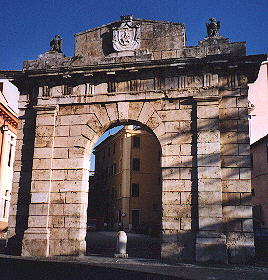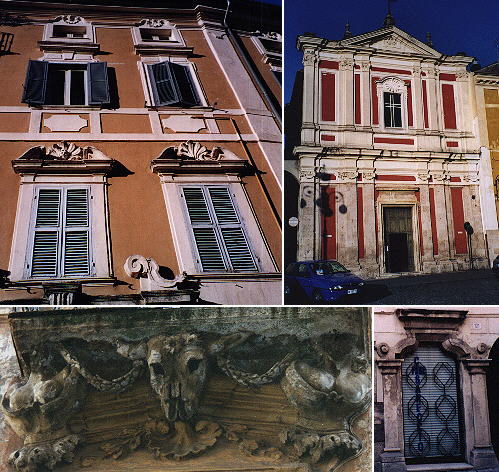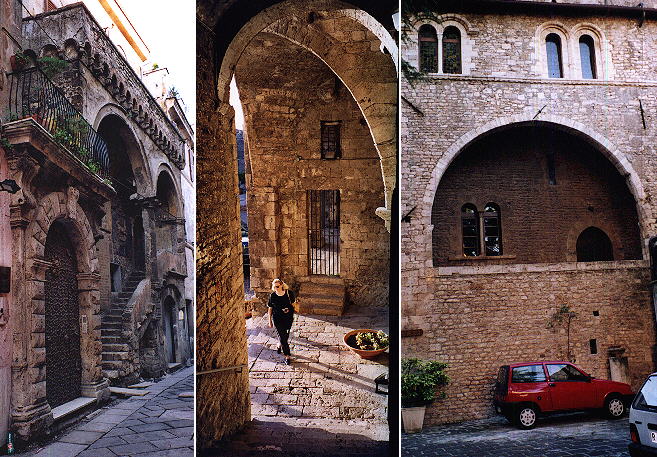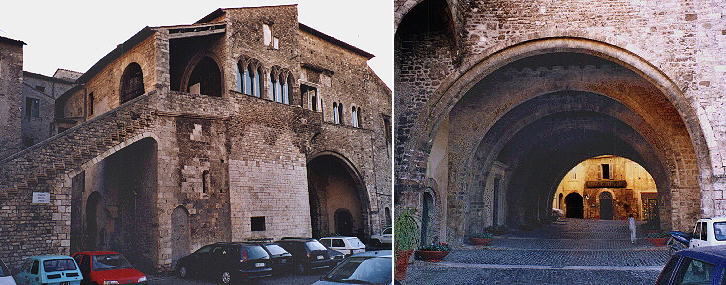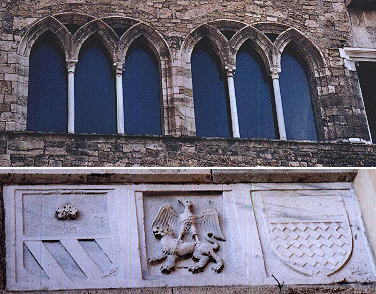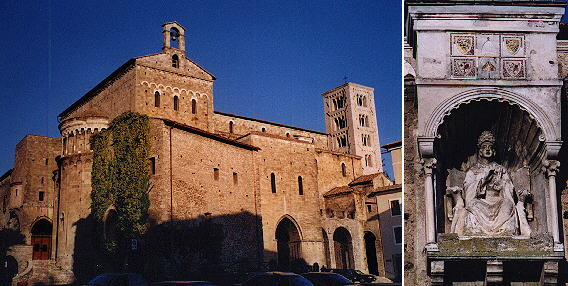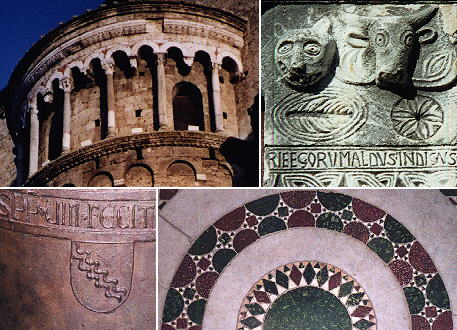  Ferdinand Gregorovius' Walks - Anagni
Gregorovius arrived in Anagni and he was impressed by a newly built gate showing
the coat of arms of Anagni. Once inside he saw many fine buildings
of the XVIIth and XVIIIth centuries which showed a wealth he had not
seen in Palestrina, Genazzano or Paliano.
This prosperity was in part due to the fact that Anagni was not the property of a family and was given by the Papal State some privileges. Another reason for the many "new" buildings Gregorovius saw, is that in 1556 the Duke of Alba in the so called Guerra di Campagna sacked and destroyed Anagni. After this event, Pius IV built new walls and gates which are still in place, although the main gate was replaced in 1842 and paid for by the town of Anagni.
There are however still some medieval buildings in Anagni and the upper part of Anagni between the Palazzo Comunale and the Cathedral is mostly medieval. Gregorovius liked very much Casa Gigli, a medieval building which reminded him of Palermo, and he stopped to draw it (it was very common for travellers to carry a drawing book to sketch landscapes or buildings). Casa Gigli was eventually bought and restored by the Swedish painter Albert Barnekow and today it is often quoted as Casa Barnekow. Gregorovius was also eager to see the Palace of Bonifatius VIII, where the pope was "slapped" by Sciarra Colonna during the confrontation between the Pope and Philip the Fair, but little is left of that palace.
Palazzo Comunale of Anagni is composed of several adjoining buildings and it does not have a main fašade. Gregorovius noted details of different styles, including windows which reminded him of Ravello, near Amalfi. There are several coats of arms on the walls: it is possible to identify the coats of arms of the Orsini and of the Caetani (the family of Bonifatius VIII).
The Cathedral of Anagni, which lies at the top of the hill, also is constructed of adjoining buildings. Bonifatius VIII is portrayed in a large statue which was erected during his lifetime (he was reproached for doing this).
There are many interesting details to note in the Cathedral and Gregorovius gave a detailed account of them.
With the description of the cathedral Gregorovius ended the account of Anagni and of his stay in Campagna di Roma. He added here a short poem where he described a sunset over the Campagna di Roma seen from the Sacred Wood near Via Appia Antica. Introductory page on Ferdinand Gregorovius Palestrina Genazzano Paliano Other walks: The Ernici Mountains: Ferentino Alatri The Volsci Mountains: Valmontone Segni Norma Cori On the Latin shores: Anzio Nettuno and Torre Astura Circe's Cape: Terracina San Felice The Orsini Castle in Bracciano Subiaco, the oldest Benedictine monastery See my Home Page on Baroque Rome or my Home Page on Rome in the footsteps of an XVIIIth century traveller. |
All images © 1999 - 2003 by Roberto Piperno. Write to romapip@quipo.it
